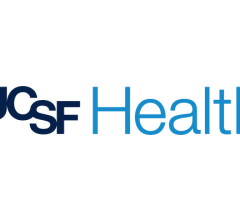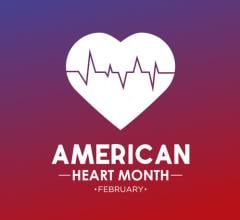
A projected rise in heart disease and stroke – along with several key risk factors, including high blood pressure and obesity – is likely to triple related costs to $1.8 trillion by 2050, according to two presidential advisories published in the AHA journal Circulation.
June 18, 2024 — At least 6 in 10 adults in an older, more diverse U.S. population could be affected by cardiovascular disease within the next 30 years, according to two new science reports. The projected rise in heart disease and stroke – along with several key risk factors, including high blood pressure and obesity – is likely to triple related costs to $1.8 trillion by 2050, according to two American Heart Association (AHA) presidential advisories published June 4 in the AHA journal Circulation. One report looks at the projected increase in cardiovascular disease rates in the decades ahead, while the other projects their total related costs.
"The landscape of cardiovascular disease in the U.S. is seeing the arrival of a near-perfect storm," Dr. Dhruv S. Kazi, vice chair of the advisory writing group, said in an AHA news release. Kazi is head of health economics and associate director of the Richard A. and Susan F. Smith Center for Outcomes Research in Cardiology and director of the cardiac critical care unit at Beth Israel Deaconess Medical Center in Boston, Mass.
"The last decade has seen a surge of cardiovascular risk factors such as uncontrolled high blood pressure, diabetes and obesity, each of which raises the risks of developing heart disease and stroke," he said. "It is not surprising that an enormous increase in cardiovascular risk factors and diseases will produce a substantial economic burden."
Cardiovascular disease refers to conditions such as coronary heart disease, including heart attacks; heart failure, which is when the heart doesn't pump as well as it should; heart arrhythmias, including a type of irregular heart rhythm called atrial fibrillation; vascular disease, which affects the veins and arteries; congenital heart defects; stroke; and high blood pressure.
High Blood Pressure Rising
Because high blood pressure, also known as hypertension, contributes to nearly all types of heart disease and stroke, researchers made separate predictions for this condition. According to their projections, from 2020 to 2050, high blood pressure is expected to rise from 51.2% to 61% of the U.S. population.
Excluding people with high blood pressure, researchers project 15% of the population will have developed cardiovascular disease by 2050, up from 11.3% in 2020. This includes a doubling of stroke rates.
Obesity rates are expected to climb from 43.1% to 60.6% of the population, with adults ages 20 to 64 expected to see the highest growth because of unhealthy diets.
The diabetes rate is expected to rise from 16.3% to 26.8% of the population.
Risk factors are rising even among children and young adults. By 2050, obesity is expected to affect a third of all children, up from 20% in 2020. The highest increases are expected among children 2 to 5 years old and 12 to 19. Contributing factors, such as insufficient physical activity and a poor diet, are expected to remain as high as 60% of all children over the next three decades.
Kazi said disease rates are climbing at a time of pivotal demographic shifts. "The last of the Baby Boomers will hit 65 in 2030, so about 1 in 5 people in the U.S. will be over 65, outnumbering children for the first time in U.S. history," he said. "Since cardiovascular risk increases with age, the aging population increases the total burden of cardiovascular disease in the country."
Researchers anticipate the Hispanic, Asian and multiracial populations in the U.S. will more than double in the coming decades.
"By 2060, more than two-thirds of children will belong to underserved, disenfranchised populations, which traditionally have higher rates of cardiovascular disease and risk factors," Kazi said.
Hispanic Population at Greatest Risk of Cardiovascular Disease
According to the projections, the biggest rise in the total number of people with cardiovascular disease will be among Hispanic adults, with Asian adults also seeing a large increase. Black adults are projected to have the highest rates of high blood pressure, diabetes and obesity, as well as the highest rates of inadequate sleep and poor diets. Asian adults are projected to have the highest rates of inadequate physical activity, with rates also high among Asian and Hispanic children.
Hispanic children are projected to have the highest obesity rates, along with the greatest projected growth in obesity, high blood pressure and diabetes. Black children are expected to have the highest overall rates of high blood pressure and diabetes.
"We found larger increases in the prevalence of cardiovascular disease and risk factors, and in the number of people with these conditions, among people from racially and ethnically diverse backgrounds," Dr. Karen E. Joynt Maddox, chair of the writing committee, said in the release. She is an associate professor of medicine at Washington University School of Medicine in St. Louis. While some of the increase is due to U.S. demographic shifts, much of the inequity in cardiovascular disease and risk factors "remains attributed to systemic racism, as well as socioeconomic factors and access to care," she said.
Positive News on Exercise and Smoking Cessation
The researchers did find some positive trends. Overall, the percentage of people who don't get enough physical activity is expected to drop, from 33.5% to 24.2% of the population. Smoking rates are expected to drop by nearly half, from 15.8% to 8.4% of the population.
The writing committee noted that aggressive approaches to reducing cardiovascular risk factors could alter some of these predictions. Any reductions in disease could help lower costs, Kazi said.
"We can bend the cost curve on cardiovascular disease, but this will require strategic investments in cardiovascular prevention and treatment," he said. "It will take all of us working together to make this happen."
For more information: www.heart.org


 May 02, 2025
May 02, 2025 








